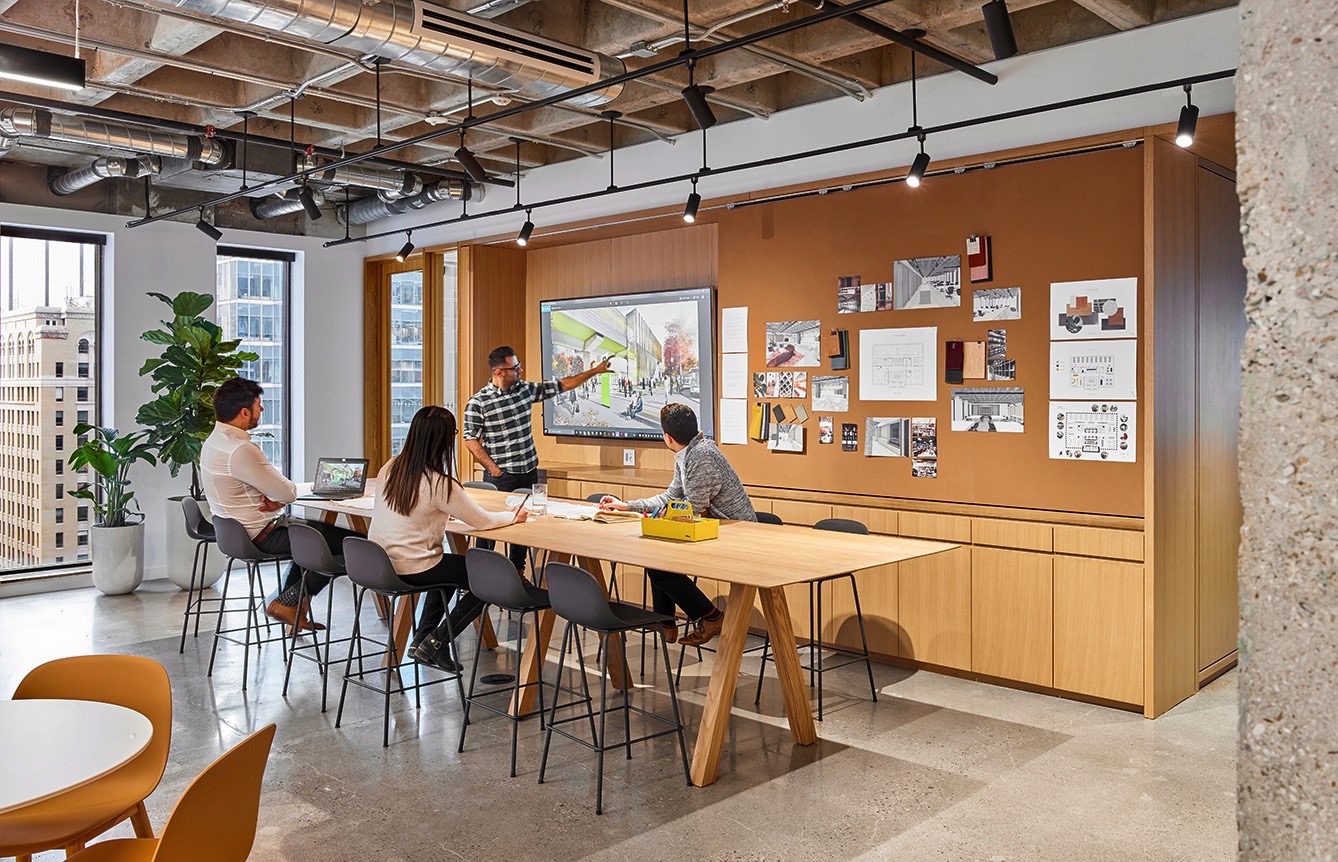Editorial: Back to the Office
How are Canada's architects negotiating the return to physical office spaces?

This summer, Canadian Architect’s owner made the decision to give up the magazine’s physical office space. It follows a precedent set by many other magazines and accelerated by the pandemic. Several of Canadian Architect’s staff worked partially from home pre-pandemic; with the complete transition to WFH over the past year and a half, the publication has continued to come out with few changes to how it’s produced.
The magazine business is a perfect candidate for a permanent remote-work model. Canadian Architect is produced with a tight team, using established cloud-based software tools—Adobe Suite, Office Suite, Dropbox. Production is digital from beginning to end: long gone are the days when we’d annotate physical photos with wax crayon crop marks, and courier packages to the printer’s for final typesetting. Each issue of the magazine is different, but also the same: it has consistent deliverables, a regular production timeline, and predictable interactions between team members.
Architecture is more complex—with larger teams, fluid team structures, and a complex mosaic of deadlines. Moreover, architects have an acute awareness of how shared space affects communications and working dynamics.
Many smaller offices have taken a flexible approach to returning to the office, based on individual staff needs and preferences. Christine Leu is a founder of LeuWebb Projects, a husband-and-wife practice. She and her partner have a home office and a young child in daycare. With their kid nowhere near getting a vaccine—leaving them still exposed to the virus—they are considering joining a shared workspace, which would allow for them to meet with an employee once or twice a week.
My husband’s firm, ten-person sustainable design practice The Architect Builders Collaborative, has already returned to working in a new, larger Toronto office equipped with HEPA air filters and sneeze guards at each desk. Some staff—including two who live in other cities—continue to work remotely part or all of the time. All staff and clients who come to the office are fully vaccinated.
Some firms are taking a wait-and-see approach, staying mostly virtual for the moment. One contact reports wanting to return to the office—she misses the proverbial water-cooler chit-chat—but most of her colleagues have indicated that they would prefer continuing to work from home.
Many firms are favouring a combination of remote and in-person work. “We are moving towards a hybrid model and thinking of downsizing our current office space,” says architect Tania Bortolotto. “We will mandate that employees come to the office whenever it is better to be at the office, rather than dialling in remotely, no matter the day of the week.”
“We’re hopefully phasing back to the office starting in October,” says Brian Rudy, partner at Moriyama & Teshima Architects. “Based on lots of input from staff, we will be adopting a hybrid strategy where we can work several days in office and several at home—to be managed at the project level.” He adds that the office is currently rethinking some studio areas to be more collaborative, but also virtual-meeting friendly.
Toronto-based BDP Quadrangle has made a deliberate decision to accommodate WFA—work-from-anywhere—as a strategy. “This aligns with our move to a new studio next year,” says principal Richard Witt. “We’re actively envisioning what our studio is ‘for’ and how it will function and support in-person, remote and hybrid interaction simultaneously. We are testing hybrid work protocols and technologies to enable this—and to provide answers to our clients with the same questions.” He adds: “In a time where human capital is our most valuable—and seemingly most challenged—asset, and with cost of living escalating in Toronto, the strategy seems to be resonating with the team.”
Some form of returning to the office will be especially valuable for teams that have taken on new members since the pandemic began. One friend described the surreal experience of switching firms during the stay-at-home order: he packed up his old laptop, a new laptop arrived by courier, and he opened it to log in to different Zoom calls—all while remaining at the same desk and chair in his home office. For newer team members, a return to in-person work will also allow for the kind of informal mentoring that comes with architecture work culture, says Gary McCluskie, principal at Diamond Schmitt. “The in-office portion is still critical to that.”
However you look at it, there is no one-size-fits-all answer to the return. “We’re still working on it,” says Betsy Williamson of Williamson Williamson. “It’s gotten no easier for leadership, even with the high vaccine uptake. We’re still working like crazy to keep it all together.”
